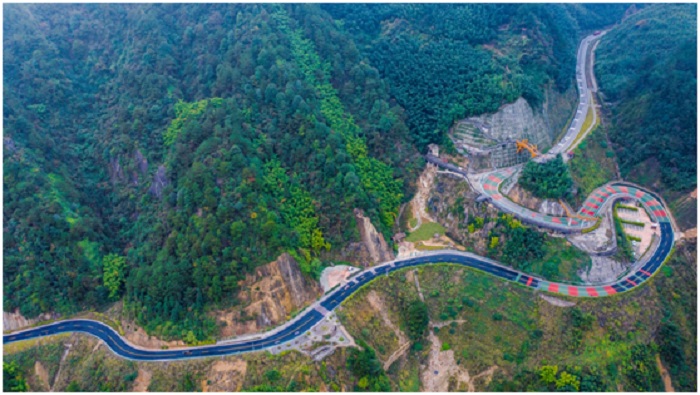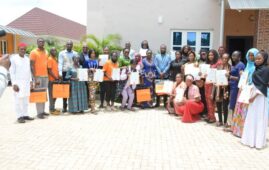



How do automobiles under the brand of Dongfeng Sokon (DFSK) manufactured by factories in the inland Chinese city of Chongqing municipality get to run in the urban and rural areas in Germany and Indonesia? How do marine fish from Vietnam and chilies from India be brought to the dining tables of Chongqing residents? How is the mountain city of Chongqing connected with foreign countries thousands of miles away?
Thanks to the municipality’s efforts to build multimodal transport system, these questions above got a clear answer.
By enabling railways, freighters, automobiles and airplanes to support and complement each other, Chongqing has seen its important logistics channels gradually get more mature and smoother with each passing day.
A multimodal transport logistics system featuring logistics channels in all directions as well as coordination among the four modes of transport involving highways, railways, waterways, and air routes has been established in the municipality. At the same time, the application of the system is gradually maturing.
The New International Land-Sea Trade Corridor (ILSTC), a trade and logistics passage with an operational hub centered in Chongqing, is a perfect example of the municipality’s multimodal transport system.
Because of the corridor, automobile accessories in containers on a freight train departed from the Tuanjiecun Station in Chongqing can be directly transferred to a cargo ship after the train arrives at Beibu Gulf Port in south China’s Guangxi Zhuang autonomous region, and then transported to Jakarta in Indonesia.
The factories of Chongqing Sokon Industry Group Co. Ltd., manufacturer of Dongfeng Sokon automobiles, in Indonesia will then assemble relevant products and sell them to consumers in countries including Indonesia.
“It costs about the same as river-ocean transportation, yet is 10 days faster,” said Wan Zhijun, deputy general manager of Chongqing Sokon Motor Group Import and Export Co., Ltd.
Since the beginning of this year, the company has exported more than 400-million-yuan (about $61 million) worth of goods through the ILSTC, according to Wan.
One of the advantages of multimodal transport is its good cost-performance, noted Liu Yizhen, assistant to general manager with the New Land-Sea Corridor Operation Co., Ltd.
For most agricultural products and industrial products, water transport costs less and yet is too slow, and rail transport is not cost-effective enough, which makes the ILSTC characterized by rail-water transport an obvious choice, Liu pointed out.
The new corridor has optimized and complemented the traditional logistics system in Chongqing where goods were transported eastward by ships along the Yangtze River, according to Hu Hongbing, deputy head of Chongqing Port and Logistics Office.
As of Oct. 31, the rail-ocean intermodal trains have made a total of 2,562 trips via the corridor, with the cargo value of foreign trade reaching about 9.46 billion yuan and that of domestic trade about 6.85 billion yuan, Hu said.
The rail-ocean intermodal transport under the corridor has opened up a grand passage from west China to the coastal regions of the country and stimulated trade and exchanges between southwestern regions in China and members of the Association of Southeast Asian Nations (ASEAN).
In 2019, the total value of foreign trade between ASEAN countries and Chongqing rose by 43.2 percent. The figure for Guangxi, Sichuan, and Gansu in China, which are all involved in the ILSTC, increased by 13.3 percent, 19.7 percent and 47.2 percent, respectively.
In the first 10 months of the year, ASEAN remained China’s largest trading partner, while the total trade value between China and ASEAN stood at 3.79 trillion yuan, a year-on-year increase of 7 percent.
Compared with traditional transshipment, multimodal transportation makes it possible for containers to be transferred between various means of transport smoothly, avoiding repacking when moving cargos from trains to ships or vice versa, said Gui Minghua, deputy head of the multimodal transport department, Chongqing Port and Logistics Office.
Gui added that the new multimodal transportation network could minimize cargo breakage, wastage and the impact of the environment, save time on the trip, and better satisfy the demand of customers for “door to door” transport services.
In terms of rail-sea intermodal transportation, the New Land-Sea Corridor Operation Co., Ltd. has rolled out a full-service product, which has avoided the inconvenience in the past that customers had to entrust land and sea carriers respectively for rail-sea transportation.
All customers need to do now is to send and receive their goods, and the rest will all be taken care of by the company.
The constantly deepening application of multimodal transport has overcome the obstacles caused by mountains and rivers that hinder Chongqing’s opening-up, and brought the municipality closer to its goal of building an international logistics hub.
Many provinces in east China and south China have improved regional connectivity with Chongqing, transporting goods to the municipality through rail-rail, rail-road, rail-water transportation and then to Central Asia and Europe with China-Europe freight trains via the Chongqing-Xinjiang-Europe Railway (or Yu’Xin’Ou Railway), Hu said, adding that goods transported through the multimodal transport network include electronic products, mechanical parts and textiles.
As for the return journey, the goods arriving in Chongqing will be transported to other parts of the country by such combined cargo transport services as rail-water and rail-rail transportation, and even to other countries like Australia, according to Hu.
The Chongqing-Xinjiang-Europe road-rail intermodal transportation center near the Tuanjiecun Station is expected to be completed and put into use within the year, and a big data display platform for international logistics channels based on China-Europe freight trains (Yu’Xin’Ou Railway) will also be completed soon, said Zhang Lingning, general manager with a branch of Chongqing Highway Transportation Group Co., Ltd. engaged in container intermodal transportation.


Senator Chuka Utazi who represented Enugu.


An Abuja based Legal Practitioner, Ugochukwu.


The African business community in Yiwu,.


Anti – kidnapping, Human Trafficking, Child.


The All Farmers’ Association of Nigeria.


The police on Tuesday arraigned a.


As part of measures to further.


Presidential Support C’ttee hails Ganduje’s emergence.


In response to the impact of.
A prayer group in Nigeria under.
Leave a Comment